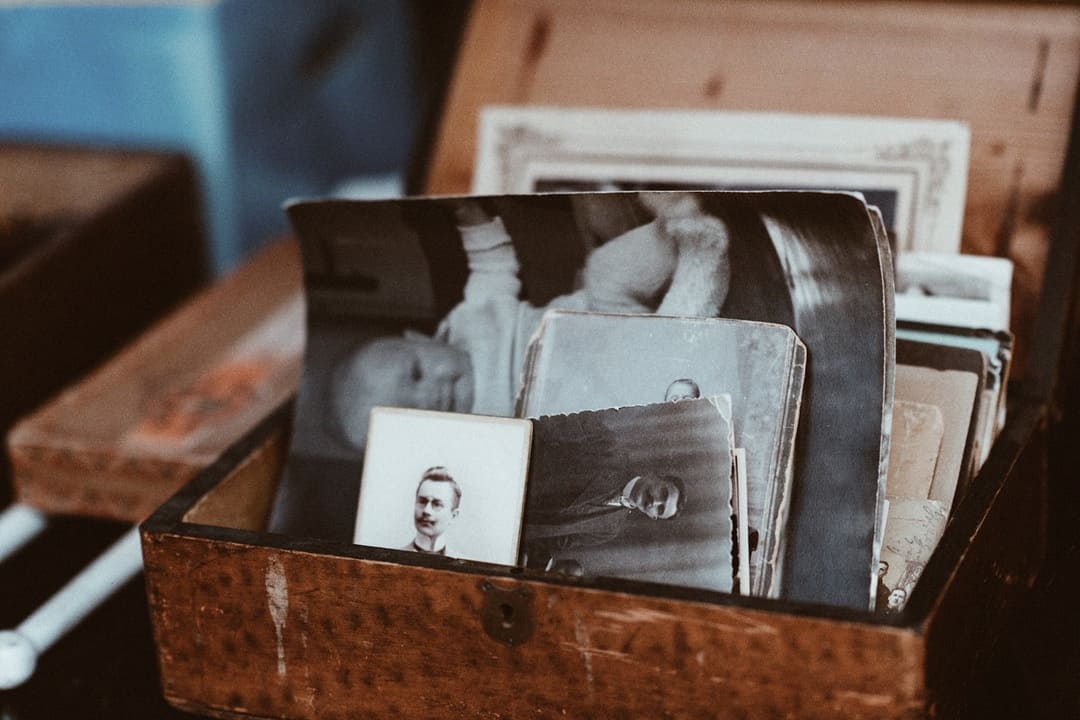Taking on a big organizing project is quite the task, and since January is GO (Get Organized) Month, I thought I would kickoff the new year by offering a little help in the project management department. After all, I want you to get your photos organized, and if I can’t show you how to find the time to tackle your projects, I’ve failed you. The task monster can be defeated, and a little planning can go a long way, so I hope that this post motivates you to plan out your memory management this year! Enjoy!
How Long Can Your Big Organizing Project Wait?
It’s easy to get overwhelmed when looking at a mountain of boxes that need to be organized. This is probably the #1 reason why more things aren’t organized. Our time is valuable, and many of us are under pressure to get a thousand other things done. Anything that isn’t a high priority or emergency simply has to wait. Your photos tend to take a back seat because they’ve been around for a while, and they could probably wait for a while longer… right? There isn’t really any type of outside force that’s telling you it must be done before a certain deadline. The problem with projects that fall into this category is that they tend get pushed aside the minute something more pressing comes along. Not good. I’m here to try and change that.
How Long Should Your Big Organizing Project Wait?
So how long should your big organizing project really wait? If you ask me, not long. I’ll be the first one to tell you that your memories are irreplaceable and need to be backed up a.s.a.p., not just for your own, but for your family’s benefit. They may not be on fire right now, but what if an accident or natural disaster happened tomorrow? Would you regret your procrastination? I would if it were me, and I’d hate to see that happen to you. That’s what I do what I do. It’s my goal to motivate you to take action before it’s too late. So I ask you again: how long can it wait? What will it take for your memories to become a high priority?
Fear of the Unknown = Procrastination
It’s scary to take on a big project, but why is that? Well, we could easily chalk it up to a lack of confidence, but it’s not that simple. When starting a new project, you’re faced with a number of choices relating to when, where, what, and how, and you just don’t have all the answers. There are too many variables, and you don’t know what to expect. Most of us hesitate when we have too many choices because we believe that no action is better than the wrong action. The unknown scares us. We don’t know exactly how long the project will take, when we will have time to do it, or where to begin. This type of uncertainty is what creates procrastination in our lives. If we don’t ‘have to’ figure it out, we put it off. Not good. Let’s try and change that.
Planning Makes the Unknown Known
To overcome this barrier of uncertainty, we just have to get to know our project a little, and it starts with the planning. As I explain in my Organizing Formula mini-course, the planning is the heavy part of any project. Everything starts with your decisions. To accomplish anything, you have to make your goal a priority. This is really the hardest part of the whole project. The most difficult piece of the puzzle. Because how do you prioritize yet another project when your calendar is already full? How do you stay motivated when you have so much else going on? I’ve found that the answer lies in your ability to adjust, and to make all those little unknown variables known. The planning stage is what accomplishes that for you by making your goal realistic and more tangible.

I’m a Perfect Pinnable!
Do You Have Too Many Goals?
Having a clear vision of what exactly you need to accomplish is a really vital step in the planning process. The question I ask my clients is: What’s your desired outcome? It’s not a trick question by any means, but if you look closer at the answers, you start to see why people have trouble. Often they have more than one goal. Having too many goals at the same time will complicate things. It’ll spread you too thin, and make your project overwhelming. For example, if you want to both organize and digitize your printed photo collection, that’s two desired outcomes, isn’t it? Two goals, not one. You can have more than one goal within the same project, but you have to finish one before you start another – believe me, it’s more than enough.
Can You Break It Down Further?
Divide & conquer is the mantra of many organizers, and for good reason. It works. Once you have your big organizing project broken up into each goal, think about how you can break it down further, into even smaller parts. Let’s say you have a backlog of 500 slides, 300 prints, and 20 home movies. Each format is different and may need to be stored and scanned differently. Slides are easier to organize than prints, but they take much longer to scan, so wouldn’t it make sense to break the project down by format as well? I do that quite often because the different sizes makes it easy to sort.
Could you make the slides phase #1, the prints phase #2, and the home movies #3? If you do this, you could still look at it as one whole project, but you could also look at it as three separate projects. Breaking it down into more manageable chunks will help you stay on track, and consolidate your workload if you’re working with different machines, which (in this example project) you would be.
Putting It All Together
Now that we’ve established that we have to break our big organizing project up into two different goals, I would recommend that goal #1 is to organize, and goal #2 is to digitize. Why? Well, if you scan first, you’ll only end up doubling your mess, and you’ll have to organize both your printed and digital versions. If you organize first, you can scan everything as an organized collection, and save yourself a lot of time.
If you break the project down by type as well (as I would), the project would now look like this (with 6 parts instead of one whole):
- Goal #1: Organize
- Phase #1 – 500 Slides
- Phase #2 – 300 Prints
- Phase #3 – 20 Home Movies
- Goal #2: Digitize
- Phase #4 – 500 Slides
- Phase #5 – 300 Prints
- Phase #6 – 20 Home Movies
If you’re a one-format-at-a-time person, it could also look like this:
- Phase #1
- 1- Organize 500 Slides
- 2- Digitize 500 Slides
- Phase #2
- 3- Organize 300 Prints
- 4- Digitize 300 Prints
- Phase #3
- 5- Organize 20 Home Movies
- 6- Digitize 20 Home Movies
Whichever way you decided to approach it, you would still have 6 smaller mini-projects that together would make up the whole big organizing project. This would be much easier to manage, but still get you to the same result. If you had more goals, you could just add more phases to the project. There isn’t really a limit on how many times you can break down a project, so it’s up to you to see where it feels comfortable enough to manage. It all depends on the volume, and your desired time frame.
Practice Makes Perfect…or Close To It
Getting good at breaking down big organizing projects take time and practice, but eventually you’ll get a good sense of how you like to work, and at what pace. Your projects don’t have to be giant for you to break them down into smaller pieces, so don’t be afraid to try this divide & conquer technique on a few smaller projects for practice. Viewing your projects as smaller pieces leading up to a bigger whole makes them less scary and less overwhelming… just resist the urge to tackle more than one goal or objective at a time!
In the next post, I’ll show you exactly how I calculate how long my projects will take based on all the different variables, including how to account for interruptions and unexpected malfunctions. Stay tuned.
What say you, readers? Do you have a different way of breaking down big projects? Do tell in the comments below!
P.S. If you’re constantly putting out fires everywhere in your life, and feel like there’s never enough time to take on any additional projects, I recommend that you talk with a time management & productivity coach. A number of my colleagues over at NAPO are stellar at this and would be happy to help you. If you’re in the Chicagoland area, visit NAPO Chicago to find a coach near you; otherwise, go to napo.net.
Ready to read the continuation of this series? Click here for Divide & Conquer, Part 2: Estimating Time in a Big Organizing Project!





